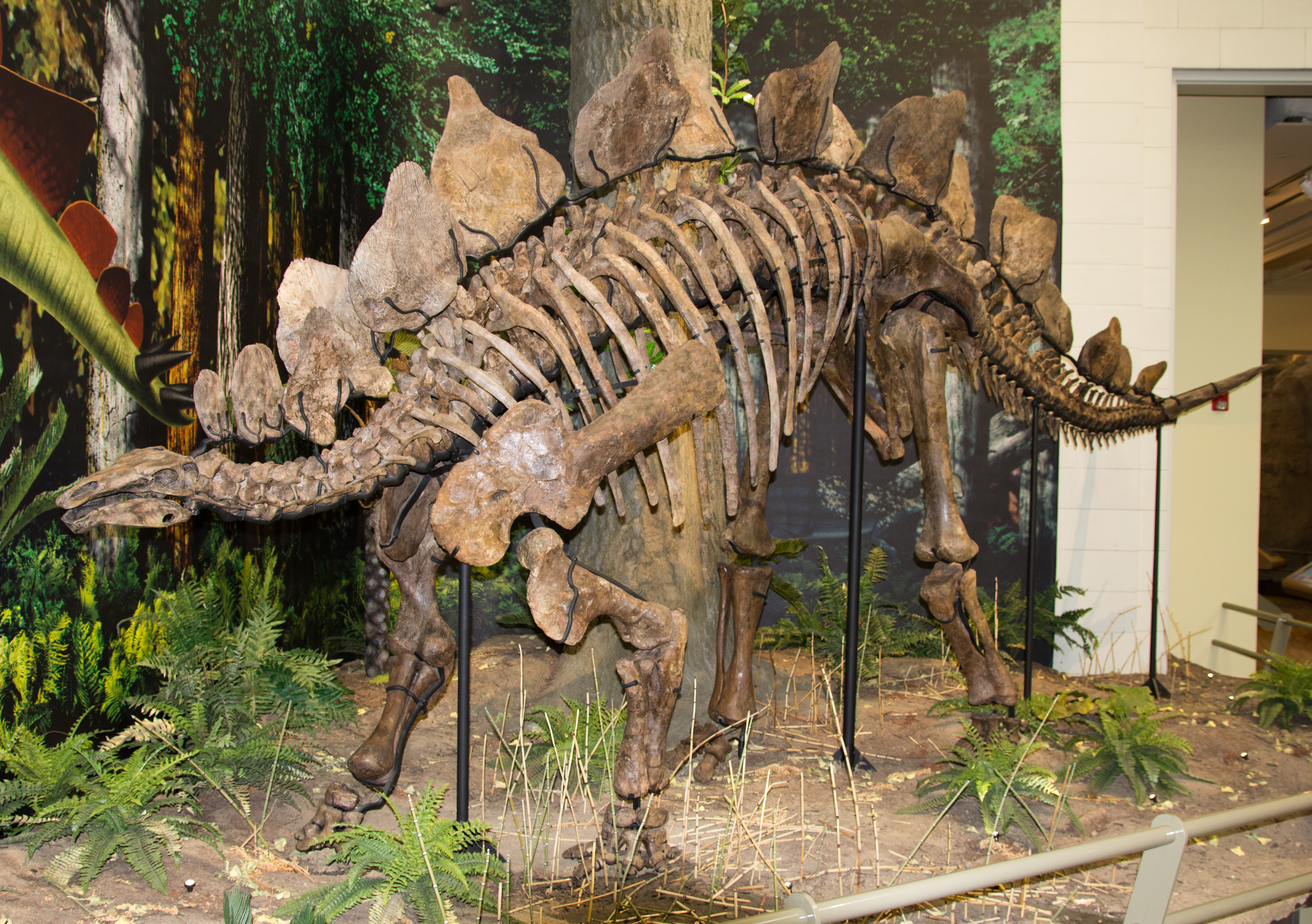 |
| Life restoration of an advanced stegosaur- I mean an ankylosaur (Ankylosaurus magniventris) by Emily Willoughby, CC-BY-SA. |
Saturday, May 23, 2015
The Year of the Ceratopsian Ankylosaurs
Monday, April 13, 2015
The American Museum Brontosaur - A History In Pictures
 |
| The wooden model used to explore poses for the original brontosaur mount is now on display beside the revised mount at the AMNH. Photo by the author. |
This is in no small measure thanks to the efforts of problematic Hitler enthusiast and highly successful paleontology promoter Henry Fairfield Osborn. Osborn became the first curator of the Vertebrate Paleontology department at the AMNH in 1891 and quickly rose to prominence, becoming the president of the museum in 1908. Osborn worked quickly to create a world-class collection of dinosaurs for the museum, both launching his own expeditions to collect fossils for display and making significant trades and acquisitions, such as the collections of E.D. Cope.
Friday, April 10, 2015
The Brontosaurus Club
 |
| Brontosaurus excelsus - the triumphant return. By M. Martyniuk, all rights reserved. |
Of course, the more technically minded paleo fans will know that Brontosaurus never actually went anywhere. Ever since its first specimen was studied in 1879 by Bone Warrior O.C. Marsh, paleontologists have agreed that the species Brontosaurus excelsus* was unique among sauropods. The question soon became, however, exactly how unique. In 1903, Elmer Riggs decided that it was similar enough to another sauropod species, Apatosaurus ajax, that they should both be placed in the same category of sauropods, and since Apatosaurus was an older category ("genus") name than Brontosaurus, he reclassified the species as Apatosaurus excelsus. However, it was clear even to Riggs that Apatosaurus excelsus and Apatosaurus ajax were different species, and the decision to "lump" them together into one category was always subjective and non-scientific - these kinds of things are a matter of taste only.
Saturday, February 21, 2015
The Evolving View of Stegosaurus
 |
| Mounted skeleton of Stegosaurus ungulatus at the Carnegie Museum. The tail, plate, and spike arrangement have been updated in this mount to reflect current thinking following the study by Carpenter (1998). Photo by Perry Quan, CC-By-SA 2.0. |
Interpretation of the life appearance of stegosaurs has changed several times since they were discovered by O.C. Marsh in 1877. The first stegosaur fossil (belonging to the species S. armatus) were found near the town of Morrison, Colorado, but the specimen was disarticulated and only a few of the plates were preserved. Initially, Marsh thought that these plates played flat along the animal's back, forming a sort of turtle-like shell, or like the tiles on a roof (hence the name Stegosaurus, which means "roofed lizard"). Marsh also initially believed that stegosaurs were aquatic, due to this turtle-like appearance, but also that they would have walked on two legs on land.
Subscribe to:
Comments (Atom)
